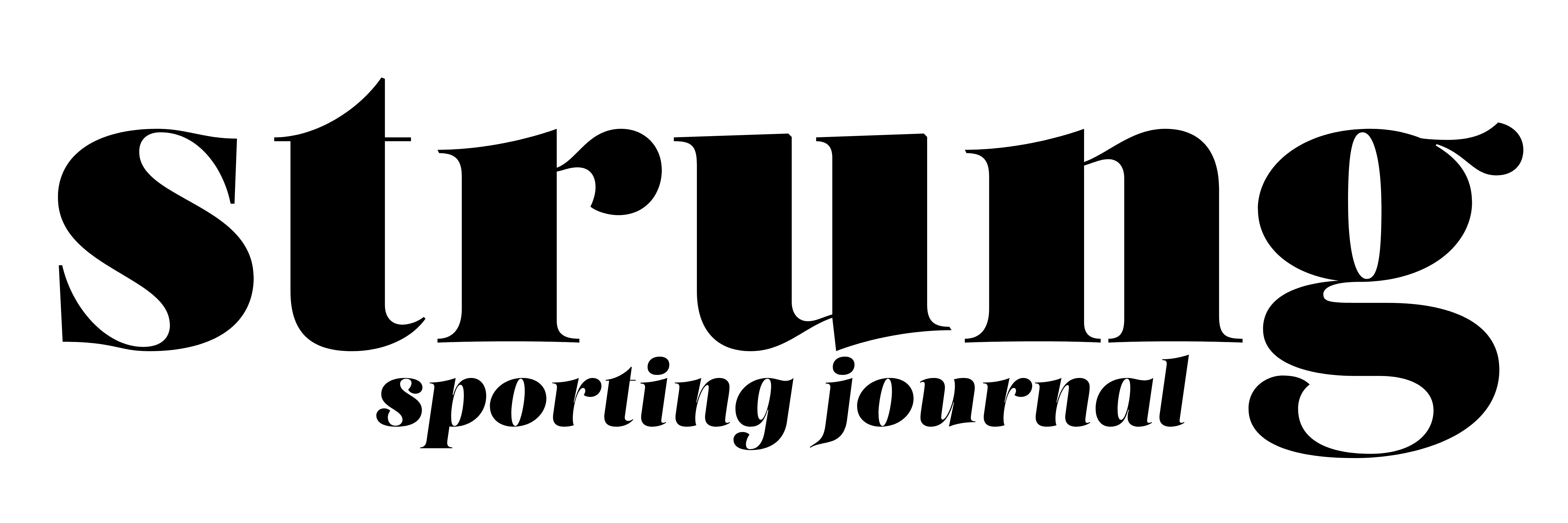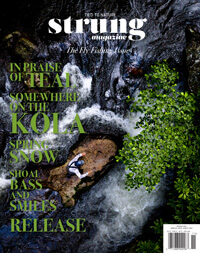by Noah Davis
I was halfway into a mouthful of Hungarian partridge that had been sautéed in shallots, tomatoes, and balsamic vinegar before being shredded and spooned onto toasted discs of baguette, when author David James Duncan introduced me to a friend of his.
“Andrew, this is Noah Davis—a man who bow-and-arrow casts, which is a ridiculous cast for ridiculous people.” The red wine in his cup swayed dangerously close to the lip. He turned against the glee of himself, stepped back across the room, and hooted with a grin.
His teasing was born from a privileging of other casts and the comfort of western expanse. On Montana rivers, a backcast is forgotten like winter in July. Even on the small streams I frequent here west of the Continental Divide, I can live comfortably between ten and two. Sometimes in the stupor of space I can sag to three o’clock and still never hook a length of streamside grass.
But I was not born among waters that host helpful casting lanes: The small streams of the Allegheny Front in Pennsylvania demanded scraped knees and elbows, crawling through claustrophobic rhododendron thickets, and finding pools just large enough to fit a single trout. Most days wading up these thin runs, the full reels wrapped with 30 yards of fly line felt like the equivalent of packing a .50 caliber for squirrel hunting.
It was in these narrow hollows that I understood the necessity for slight motions in cramped spaces. Felt the error and anger that comes from long rods and more than two feet of line slipping from the final guide. Discovered where the demarcation between hunting and fishing blurs. Connected the soft water behind a rock and the soft muscle behind a deer’s shoulder.
Fly fishing has always been about tension: the tension of the line when casting, the tension of the fish to your hook and tippet, the tension water holds against hackle. The bow-and-arrow cast brings that tension to your ear, dangerously close to the soft lobe and ridged cartilage. A dangerous bend in the rod.
So much beauty is found in tension. The opportunity for beauty is stitched to that arch. But beauty isn’t guaranteed. Anyone who has attempted the cast or taught others the cast has seen his line flaccidly drop to the water. The thin leader slipping through the fingers too early, the aim not true, a bit of leaf spinning the fly down to the angler’s boot.
When the cast does unfurl like a fern, line spearing toward the space destined by your rod tip, and the gaudy dry fly lands near the head of the pool, the beauty is fully realized. A balance of time and tension meeting in a moment when a fish may rise. An intimate attraction here in the cramped corner of the mountain.
And the brook trout.
The tiny blue-haloed gods of these coldwater worlds demand placement along the seam or corner where they may rise and give us a glimpse into the wet we constantly probe. A gift of a moment shared that is precious in its finitude becomes more precious every passing May. These beings are what pull me higher on the mountain, deeper into the brush.
This cast has carried me higher and higher to the birth of these streams, to places that demand the angler shape himself to the lattice of limbs and unsteadiness of stream stone. The crack on the plateau where water belches up from the ground and begins its long flow to the valley—where the cold of the mountain slowly spills out.
David told me last week that he knows where to find some brookies. He suggests a roll cast. Says he’ll hoot at my bow-and-arrow and spook all the fish. I’ll find some streams on my own with enough shade to cloak my shape. Some tiny opening for me to send a fly to a small fish in waiting.


 SUBSCRIBE TO STRUNG MAGAZINE
SUBSCRIBE TO STRUNG MAGAZINE